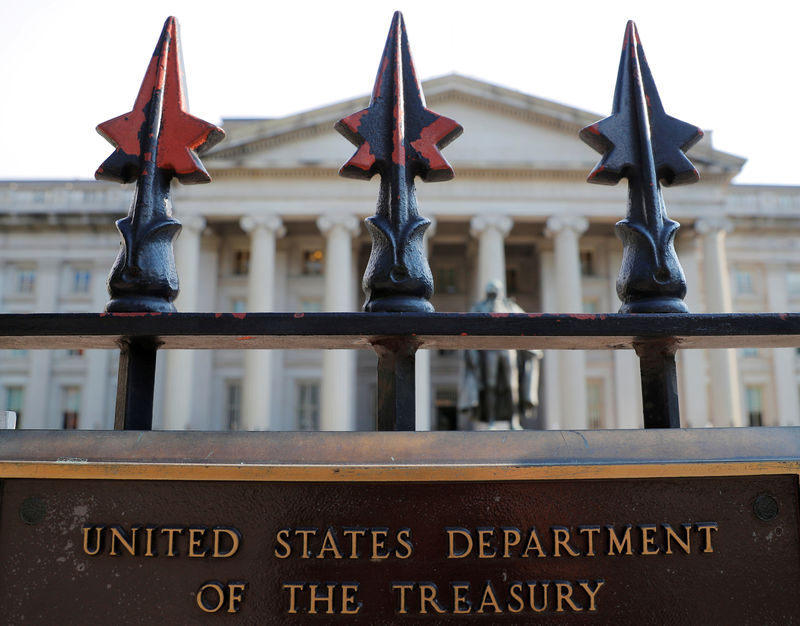(Bloomberg) -- The U.S. Treasury Department expressed continued interest in issuing a 50-year bond, for the first time, as part of efforts to expand its investor base as the budget deficit widens to $1 trillion.
The department said it’s also considering issuance of a 20-year bond and an inaugural floating-rate note with a one-year maturity linked to the Secured Overnight Financing Rate, according to the Treasury’s quarterly refunding statement released Wednesday in Washington.
The Treasury said it will keep its auctions of nominal coupon and floating-rate debt steady at a record $84 billion for a fourth straight quarter.
The department also alluded briefly to the U.S. central bank’s efforts to address volatility in money markets since mid-September by replenishing reserves in the financial system. The Treasury said it’s “monitoring the Federal Reserve’s recently announced Treasury bill purchases.”
Some market participants have attributed the funding market strains to government debt piling up on dealer balance sheets as the Treasury’s borrowing needs increase. The budget shortfall is expected to exceed $1 trillion in the year through September 2020, after closing the 2019 fiscal year at $984 billion.
Wall Street sees the current schedule of issuance covering the Treasury’s needs until late next year, when a growing deficit raises the prospect of increased coupon sizes or new issues.
Three Issues
The Treasury indicated it’s still pursuing three prospective issues it’s been seeking feedback on this year. In Wednesday’s statement the department said it’s “taking a proactive approach to prepare for prospective future financing needs” by “exploring a range of possible new products.”
Those include a one-year floating-rate note linked to SOFR, which is intended to replace the Libor benchmark; a rebooted 20-year bond; and a 50-year bond, according to the statement.
A SOFR-linked issue and a 20-year security topped the list of blue-sky ideas the Treasury solicited from its borrowing advisory committee early this year to help expand and diversify the investor base for its expanding pile of debt.
But dealers were unenthused by the Treasury’s proposal for a 50- or 100-year bond when the department revisited the proposal earlier this year.
The Treasury said Wednesday that it expects to maintain the November 10-year TIPS second reopening auction size at $12 billion, the December 5-year TIPS reopening auction size at $15 billion and the January 10-year TIPS auction size at $14 billion. The total expected TIPS issuance size of $152 billion for calendar year 2019 is consistent with the department’s prior guidance, the Treasury said.
The Treasury’s latest quarterly estimates put 2019 total borrowing at $1.2 trillion, though it plans to issue less debt in the final months of the year than previously anticipated.
The department expects to raise $352 billion in net marketable debt from October through December, $29 billion less than it estimated in July, according to a statement released Monday in Washington. The revision owed in part to a higher than expected cash balance at the start of the quarter, thanks to the Fed halting its balance sheet run-off sooner than expected.
The Treasury sees issuance picking up in January through March, to $389 billion, based on an end-of-March cash balance of $400 billion.
Fed policy makers conclude a two-day meeting in Washington later Wednesday, where they’re widely anticipated to cut the benchmark interest rate by a quarter point for the third time in a row.
(Adds chart box in fourth paragraph.)
